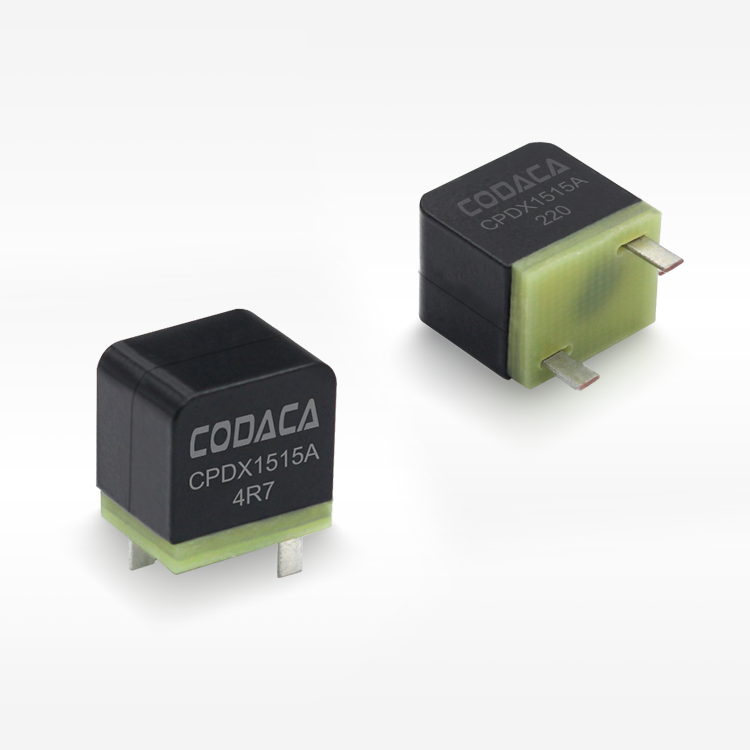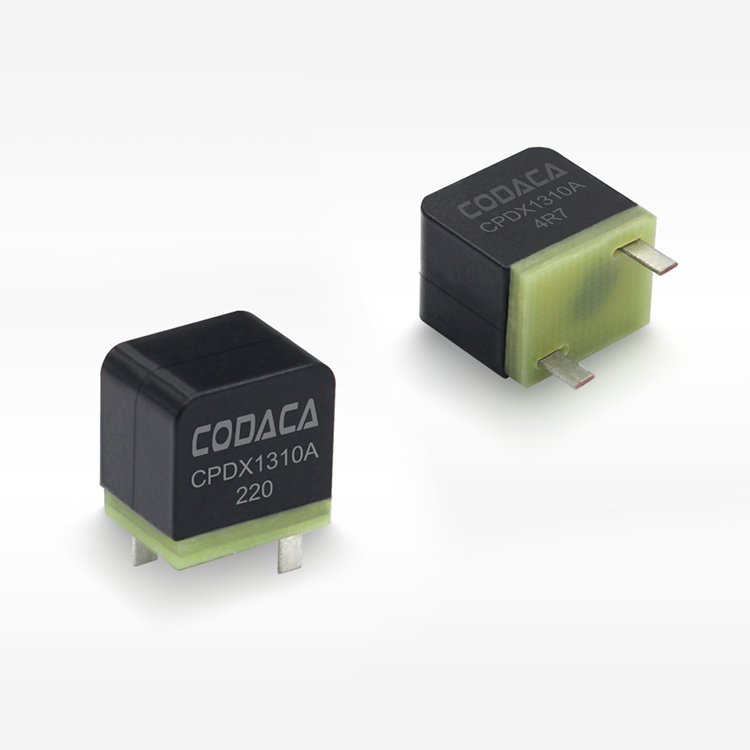Introduction
High current power inductors are crucial components in power electronics, designed to store energy in a magnetic field while allowing significant currents to pass through. These inductors are essential for a variety of applications, including DC-DC converters, power supplies, and renewable energy systems. By efficiently storing and releasing energy, they play a vital role in regulating voltage and ensuring the stability of electrical systems.
The primary functions of high current power inductors include energy storage, filtering, and voltage regulation. These components are instrumental in filtering out unwanted noise and electromagnetic interference, thereby enhancing device performance. Additionally, by stabilizing voltage levels, high current power inductors prevent surges and ensure the smooth operation of electronic systems.
High current power inductors significantly contribute to energy efficiency by minimizing system losses. They enhance overall system performance by reducing energy waste, making them indispensable for advanced electronic systems. For instance, the CPDX Series exemplifies modern high current power inductors known for their efficiency and compactness. They are widely adopted across industries for their remarkable ability to improve system efficiency while maintaining a minimal footprint.
How High Current Power Inductors Improve Energy Efficiency
High current power inductors enhance energy efficiency by efficiently storing and releasing energy, converting electrical energy into magnetic energy and vice versa. This energy conversion not only allows for efficient power management in electronic systems but also improves performance in power conversion applications such as DC-DC converters. By maintaining a steady flow of energy, power inductors ensure that devices operate smoothly with minimal energy losses, optimizing the overall efficiency of electronic systems.
Moreover, power inductors play a crucial role in filtering and noise reduction, significantly improving signal quality within electronic devices. This is particularly vital in power supply circuits, where they help suppress electromagnetic interference (EMI) and reduce wasted energy, ensuring that devices perform optimally. Power inductors are instrumental in applications such as computer power supplies, solar inverters, and electric vehicle charging systems, where efficient energy management and reduced noise are essential for reliable operation and enhanced energy efficiency. In these settings, their ability to handle high currents while maintaining stability enables the effective regulation and smoothing of current, resulting in more efficient and reliable electronic systems.
Applications of High Current Power Inductors in Power Electronics
High current power inductors are pivotal in the efficient operation of DC-DC converters. They are essential components for voltage regulation, ensuring that electronic systems maintain high efficiency while operating across varying loads. By storing and delivering energy, these inductors help smooth the transition between different voltage levels, thereby minimizing energy loss and optimizing system reliability.
Moreover, in renewable energy systems like wind and solar power installations, high current power inductors significantly enhance energy capture and storage capabilities. These inductors stabilize the intermittent energy generated, ensuring that fluctuations do not compromise the system's efficiency. By facilitating smoother energy flows, they play a crucial role in sustaining renewable energy's reliability.
In the realm of electric vehicles, high current power inductors are fundamental for effective battery management and power distribution. They aid in ensuring that energy is distributed evenly and efficiently, thereby maximizing the vehicle's range and performance. By reducing power losses during energy transfer from the battery to the motor, these inductors help in enhancing the overall distance and efficiency of electric vehicles. Their role is crucial in advancing the effectiveness and sustainability of modern transportation methods.
Key Factors Influencing the Efficiency of High Current Power Inductors
The efficiency of high current power inductors is significantly influenced by DC resistance (DCR) and energy loss. Lower DCR plays a vital role in achieving higher efficiency as it reduces heat generation, which is a common challenge in energy-intensive applications. For instance, employing inductors with minimal DCR is crucial for optimizing battery life in portable devices, where every watt counts towards prolonged device operation.
Core losses and material selection are critical components impacting the performance of power inductors. The choice of core material can dramatically affect how energy is lost during operation due to its inherent properties. Materials that exhibit minimal energy dissipation under operational conditions are preferred to maintain high efficiency. The Steinmetz equation helps engineers predict core loss based on factors like frequency and flux density, enabling the selection of better-performing materials.
Saturation significantly impacts the ability of an inductor to manage current flow effectively, thereby affecting overall system efficiency. When an inductor saturates, its inductance decreases, which impedes its ability to regulate current efficiently. This limitation can lead to overheating and reduced performance in power conversion systems. Understanding and managing saturation levels is vital for ensuring that inductors handle peak currents without performance degradation, thus ensuring reliable operation in power electronics applications.
Advancements in High Current Power Inductor Technology
Recent advancements in high current power inductor technology focus on the development of innovative core materials that enhance magnetic performance while reducing size and weight. These innovations improve design versatility, allowing electronic designers to achieve higher performance in compact applications. For instance, materials like nanocrystalline and amorphous alloys are being used more frequently due to their superior magnetic properties and lower core losses.
Another significant trend is the miniaturization of inductors, driven by the demand for integration into smaller, more efficient electronic devices, especially in the consumer electronics market. This trend is supported by the development of modern designs that allow inductors to be integrated into tight spaces without compromising their performance. As a result, products such as smartphones and laptops that require compact yet powerful components are benefiting from these advancements in miniaturization.

Furthermore, high current inductors are being increasingly integrated with advanced power systems, such as smart grids and high-efficiency converters. This integration reflects the potential for future improvements in energy distribution, enabling more sustainable energy solutions. The ability of power inductors to adapt to these emerging technologies illustrates their crucial role in the evolution of energy-efficient systems, aligning with global efforts to optimize energy usage and reduce environmental impact.
Practical Considerations for Selecting High Current Power Inductors
When selecting high current power inductors, size and weight constraints are critical as they can significantly influence design efficiency. In application-specific scenarios, engineers must tailor the inductor choice to fit the spatial limitations and weight restrictions of the device. For instance, in compact consumer electronics, minimizing sizes such as PCB footprint while maximizing performance is imperative to seamlessly integrate power components without compromising device portability or efficiency.
Equally important is matching inductors with specific application requirements to avoid performance reductions and efficiency losses. A mismatch can lead to overheating, saturation, and increased losses, which in turn impact the overall device performance. High current power inductors should be chosen based on accurate compatibility assessments with the load current, voltage, and frequency requirements to ensure optimal functionality within the application.
Lastly, effective thermal management is essential for the efficient operation and longevity of high current power inductors. Heat dissipation techniques such as heat sinks, ventilation, and advanced thermal interface materials help maintain the inductor within its safe operating temperature range. Employing these strategies prevents overheating and ensures that the inductors perform reliably over time, prolonging their lifespan and maintaining the integrity of the electronic device they support.
Conclusion on the Influence of High Current Power Inductors on Energy Efficiency
In summary, high current power inductors significantly enhance energy efficiency across various applications by minimizing power loss and optimizing power conversion. They are fundamental components in systems that require high energy efficiency, such as power supplies and electric vehicles. The future trends in power inductor technologies indicate a growing emphasis on sustainability and energy management. As market demands and research progress, we can expect advancements in materials and designs that will further boost the energy efficiency and performance of these inductors.
FAQ
What are high current power inductors used for?
High current power inductors are used in power electronics to store energy in a magnetic field while allowing significant currents to pass through. They are crucial in applications like DC-DC converters, power supplies, renewable energy systems, and electric vehicles for energy storage, noise filtering, and voltage regulation.
How do high current power inductors improve energy efficiency?
They improve energy efficiency by converting electrical energy into magnetic energy and vice versa, allowing efficient power management. They also filter out noise and reduce electromagnetic interference, enhancing signal quality and reducing energy losses in electronic systems.
What advancements have been made in high current power inductors?
Recent advancements include the development of new core materials like nanocrystalline and amorphous alloys, which enhance magnetic performance. Miniaturization trends cater to the need for smaller devices, improving the integration of inductors into compact spaces without compromising their functions.
What are the key factors affecting the efficiency of these inductors?
Factors include DC resistance (DCR), energy loss, core material selection, and saturation levels. Lower DCR and minimal core losses improve efficiency, while saturation impacts the inductor's ability to manage current flow effectively.
Table of Contents
- Introduction
- How High Current Power Inductors Improve Energy Efficiency
- Applications of High Current Power Inductors in Power Electronics
- Key Factors Influencing the Efficiency of High Current Power Inductors
- Advancements in High Current Power Inductor Technology
- Practical Considerations for Selecting High Current Power Inductors
- Conclusion on the Influence of High Current Power Inductors on Energy Efficiency
- FAQ



